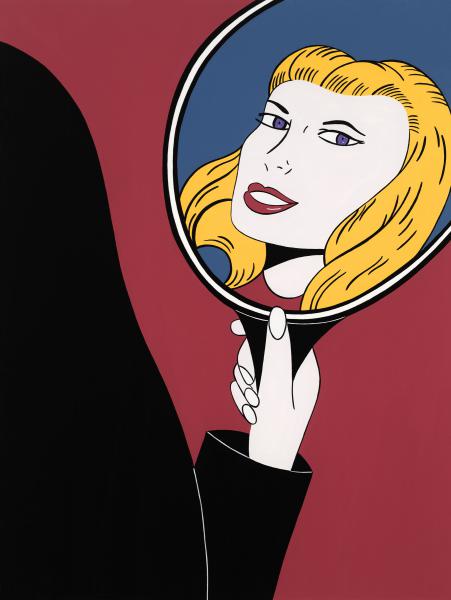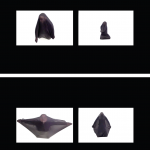Helen Zughaib mixes familiar Western motifs with traditional Islamic abayas in an attempt to bridge East and West and confound predominant stereotypes.
I am an Arab American, born in Beirut, Lebanon. I also lived in Kuwait and Iraq with my family, before coming to study art at Syracuse University in New York. Though I am an Arab American Christian, I feel that my background in the Arab world provides me with a platform to address issues that affect both Muslim and Christian women, especially after 9/11.
With much of the media focused on negative stereotypes of Arabs and Arab Americans, I began to work on a series I call "Changing Perceptions." In these paintings, I use the black abaya and veil, juxtaposed with elements from recognizable Western artists such as Picasso, Mondrian and Lichtenstein, to create a new vision of the abaya, so often misunderstood in the West. In these pieces, I weave together East and West, symbolizing a shared identity and dialogue, as opposed to a separateness between the two.
To me, the abaya represents tradition, modesty, and in many cases, shelter and comfort. In my experience, I have not seen the abaya as restrictive or inhibiting (though on recent travel to the Middle East, I did notice some women in more complete covering, with only their eyes exposed). When asked, women told me that wearing hijab or covering depended more likely on the tradition in their particular village, indicating it was a personal choice rather than something imposed upon them. When further questioned, some expressed a certain freedom and appreciate the anonymity the abaya offered. In fact, many women consider it a kind of "equalizer," in that women become less objectified and are not judged solely on their appearance.
I feel that all women, regardless of faith, wish for this same respect. In Damascus, where my great grandmother was born and raised as a Greek Orthodox, she wore a "mandeel" ( the Arabic word for the Spanish mantilla), as did her peers. It was usually a pale blue, grey, or black scarf, used to keep the sun away and her hair in place. The tradition of covering one's head in church was also seen as a sign of respect and modesty. Many also wore gloves and covered their arms.
I feel that in my series, "Changing Perceptions" I try to cross boundaries and borders between East and West by using Western motifs, for example, Wonder Woman in my painting, "The Wonder Within." Her strength and almost masculine attributes blend and blur stereotypes of Arab women and question notions of oppression and repression. I ask the viewer to not judge by outward appearance alone, as in "I Am Not Who You Think I Am." In "Abaya Driving" I project freedom and the power of women, free to control their own lives. I feel that these values of equality and freedom cut across all lines, regardless of religion and are desired and fought for by all women














